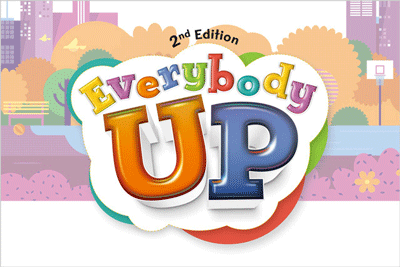Special Feature: CLIL
How can we educate students not just improving their English, but also in a way that develops their 21st century skills? This page features some practical ways to adopt CLIL into your classroom effectively.
Everybody Up 2nd edition Available Now ~ Linking your classroom to the wider world

Features
- Posters and documentary-style videos enhance the CLIL lessons
- 21st century skills focus promotes creativity, critical thinking, communication, and collaboration
- Projects get students working together to activate new language
- Online Play language games make it easy to practice at home
What is CLIL?
'CLIL refers to situations where subjects, or parts of subjects, are taught through a foreign language with dual-focused aims, namely the learning of content, and the simultaneous learning of a foreign language'
-- David Marsh
Effective ways to adopt CLIL into your classroom
The video recordings from the CLIL event "A Dialogue with Patsy M. Lightbown and Yuki Yamano" held on January 2016.
Part 1: CLIL: What's in a name?
Part 2: What is 'Transfer Appropriate Processing'?
Part 3: Q&A
Q: Is CLIL instruction applicable for limited '45-minute' classes?
Q: How should teachers use L1 language in CLIL classes?
Q: Is grammar instruction necessary in CLIL classes?
Practical ideas to adopt CLIL to your classes
Everybody Up Case Studies

Noda Gakuen Junior and Senior High School, Yamaguchi
Name of the Teacher: Lucas Bohaty
Course name: Junior English
Uses Everybody Up (1st edition) Levels 1-3 for students in grades 3-6. One 50-minute lesson per week, 30 lessons per year.
Overview:
We use our own teaching approach, but we do use the student book, workbook picture cards in every lesson. During the lessons we use the pictures or activities from the student book ...Read more

Kamakura Women's University Attached Elementary School, Kanagawa
Name of the Teacher: Junko Takatsu, Simone Symister
Uses Everybody Up (1st edition) Level 2 for the nd and 3rd grades, and Level 3 for the 5th and 6th grades. 1 lesson per week. One of the goals is to achieve Eiken 5th grade level or similar at the time of graduation.
Overview:
At the beginning of each lesson, the students practice greetings and key phrases, take mini-test or enjoy story telling. Everybody up is used as a main textbook for the rest of the lesson. Each lesson covers appropriate amount of the textbook ...Read more
Share your Everybody Up experience!
Are you using Everybody Up in your classes? If you are interested in sharing your ideas on how to maximize the coursebook, please contact us.
newsletter.japan@oup.com
